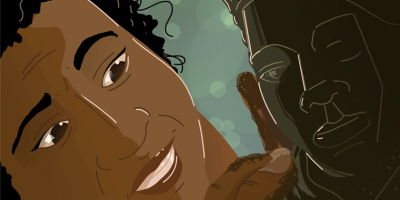
Public monuments to honor Black Americans in the 1930s: that was the vision of Augusta Savage, a Harlem Renaissance sculptor who has been called one of the most influential artists of the 20th century. But the monuments she left behind might not be what you'd expect.
Guests:
Karen Lemmey, Lucy S. Rhame Curator of Sculpture at the Smithsonian American Art Museum
Grace Yasumura, assistant curator at the Smithsonian American Art Museum
Tess Korobkin, assistant professor of American Art at University of Maryland, College Park
Smithsonian Links:
- Portrait of Augusta Savage in the collection of the Smithsonian's National Portrait Gallery.
- Augusta Savage's story featured in comics from the Smithsonian American Art Museum’s Drawn to Art series.
- Learn about the sculpture Gamin created by Augusta Savage early in her career.
- Augusta Savage’s famed 1939 New York World’s Fair sculpture was inspired by the hymn "Lift Every Voice and Sing." Smithsonian magazine traces the song’s path to prominence within the Black musical canon.
- How did the Great Migration at the turn of the 20th century spark creative movements like the Harlem Renaissance? Understand the origins and impact of this pivotal moment with the Smithsonian’s National Museum of African American History and Culture.
Sign up to unlock the full Sidedoor experience!
Get bonus content, news, and updates in your inbox.
Please enter a valid email address.
